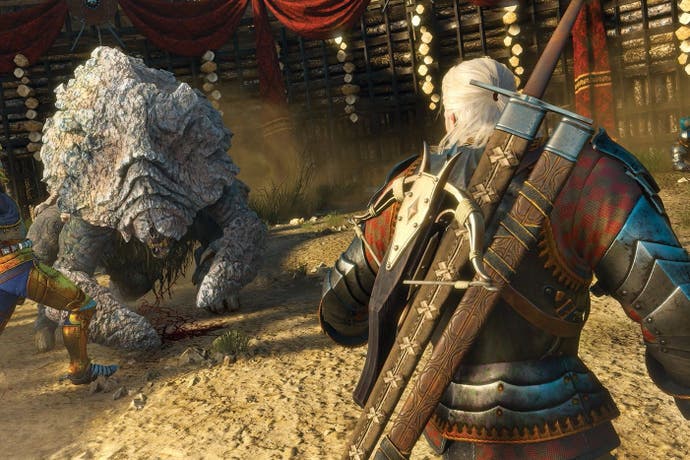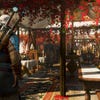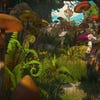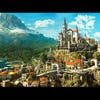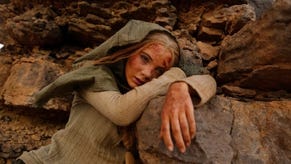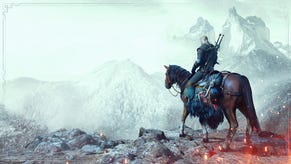Witcher 3: Blood and Wine is "a graphics upgrade from the base game"
"It's like a fresh development," says CD Projekt Red.
A year ago I sat in a room with a downcast Adam Badowski, studio head of CD Projekt Red, and we talked about The Witcher 3 'graphics downgrade'. He wanted his game to visually knock people's socks off but instead it faced criticism.
Something he said stuck with me. He said, and I'm paraphrasing here: you wait until expansion two - then you'll see what we can really do.
Now the wait is over: expansion two - Blood and Wine - is nearly here (it's out 31st May). Moreover, I've played it. And not only is it beautiful - a postcard of a place inspired by Southern France, drenched in colour and sun - it's actually technically more accomplished to boot.
"Generally it is a graphics upgrade from the base game," senior environment artist Len de Gracia told me. "We have employed methods that we did not implement in the base game. You can literally bring your camera up to a wall now and the textures would be crisp - at least in most cases.
"80, 85, probably even 90 per cent of the assets - in terms of environment that you find in this game - are brand new. You can just look at the market stalls right now: you would never see the same market stalls in the base game. For the longest time we were like, 'I want this, I want that,' and finally we got this chance - we got this room to incorporate other people. We have probably 20 times the amount of vegetables we used to!
"We just wanted to show that we can actually push it to the limit this time."
You shouldn't see anything that looks similar in Toussaint to in the base Witcher 3 game. All the vegetation and architecture in this whimsical land (that's bigger than Skellige) are different, even the props and lighting. And if something has been reused it should be so heavily masked you don't notice.
That's wonderful but also worrying. Worrying because consoles struggled with the base Witcher 3 game and needed patches to stabilise performance. If Blood and Wine is even more visually impressive than base Witcher 3, what does that mean for consoles - that they're in for a rough time?
"No, actually," Len de Gracia replied. "We also got really organised. It's like a fresh development. Blood and Wine we literally started from scratch. The mistakes we went through, in terms of perhaps optimisation before, we have covered them.
"For example: before, each and every prop had its own texture; this might require another draw-call or so. It impacts performance. But this time around we know we're going to group these things together so you have them representing same texture now, so we're loading less but maximising the quality at the same time."
That means - hold your breath - Blood and Wine may run at 30 frames-per-second on console from the get go.
"We are still aiming for that but for the most part we have already hit it," said de Gracia. "In certain places we still need to run through stuff and try to optimise it the best we can, but in comparison to Witcher 3, production has been way smoother."
Game director Konrad Tomaszkiewicz echoed that, and told me in a separate interview that "we are pointing it at 30fps and when I am playing right now, [it] works well".
Toussaint is a self-contained "independent entity" separate from the base Witcher 3 game. That's how it could be built from scratch using new methods and optimisations. But because of that it makes the optimisations "very difficult" to retroactively apply to the base game.
"It would be very difficult," said de Gracia. "This time we went through a clean slate. If we wanted to change the base game ... we might run into a lot of problems. But maybe, perhaps, in future, they will be like, 'Maybe we could pimp up Witcher 3 base game.' We'll see.
You can read my thoughts about the new expansion in my Blood and Wine preview that's live now.
